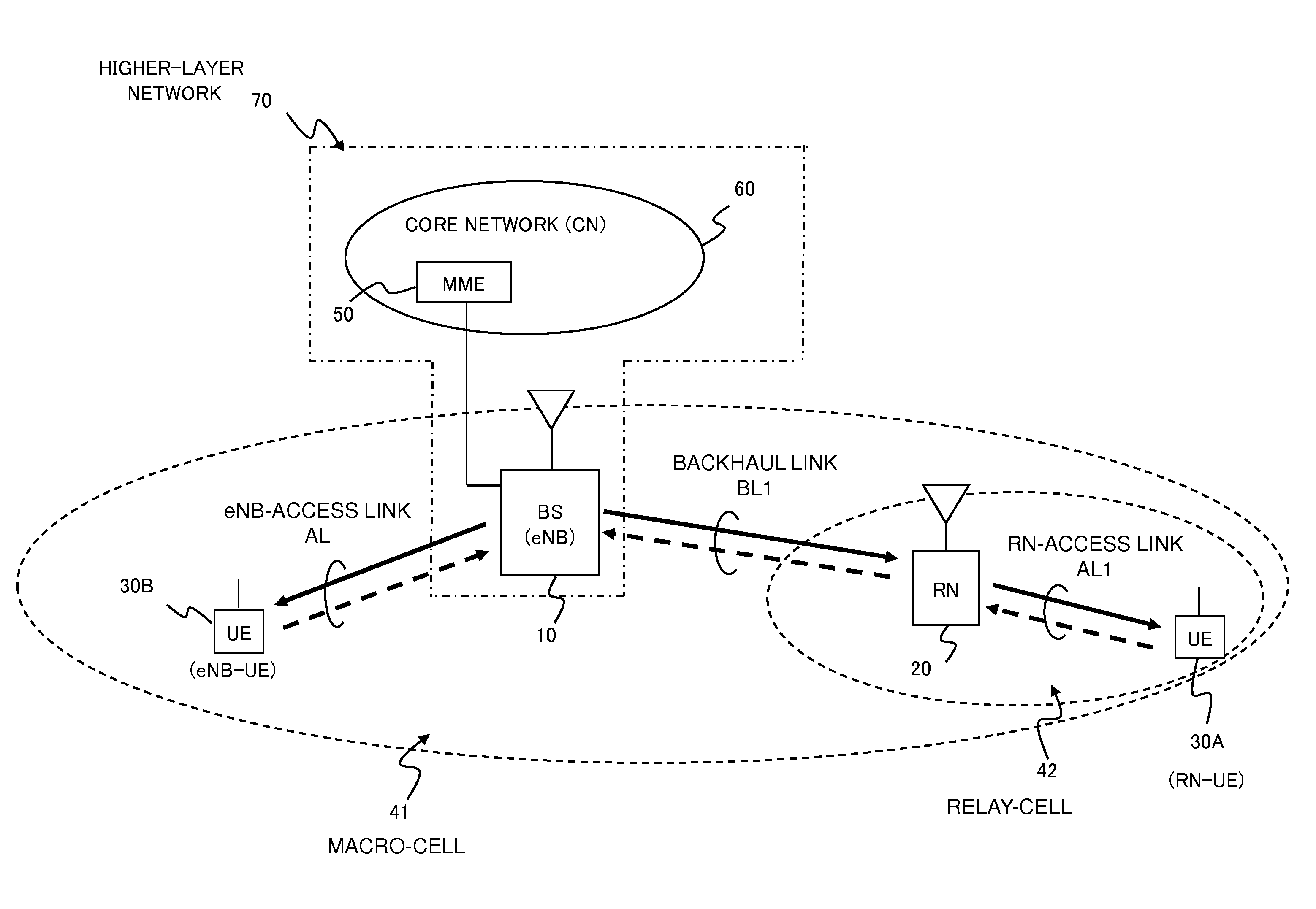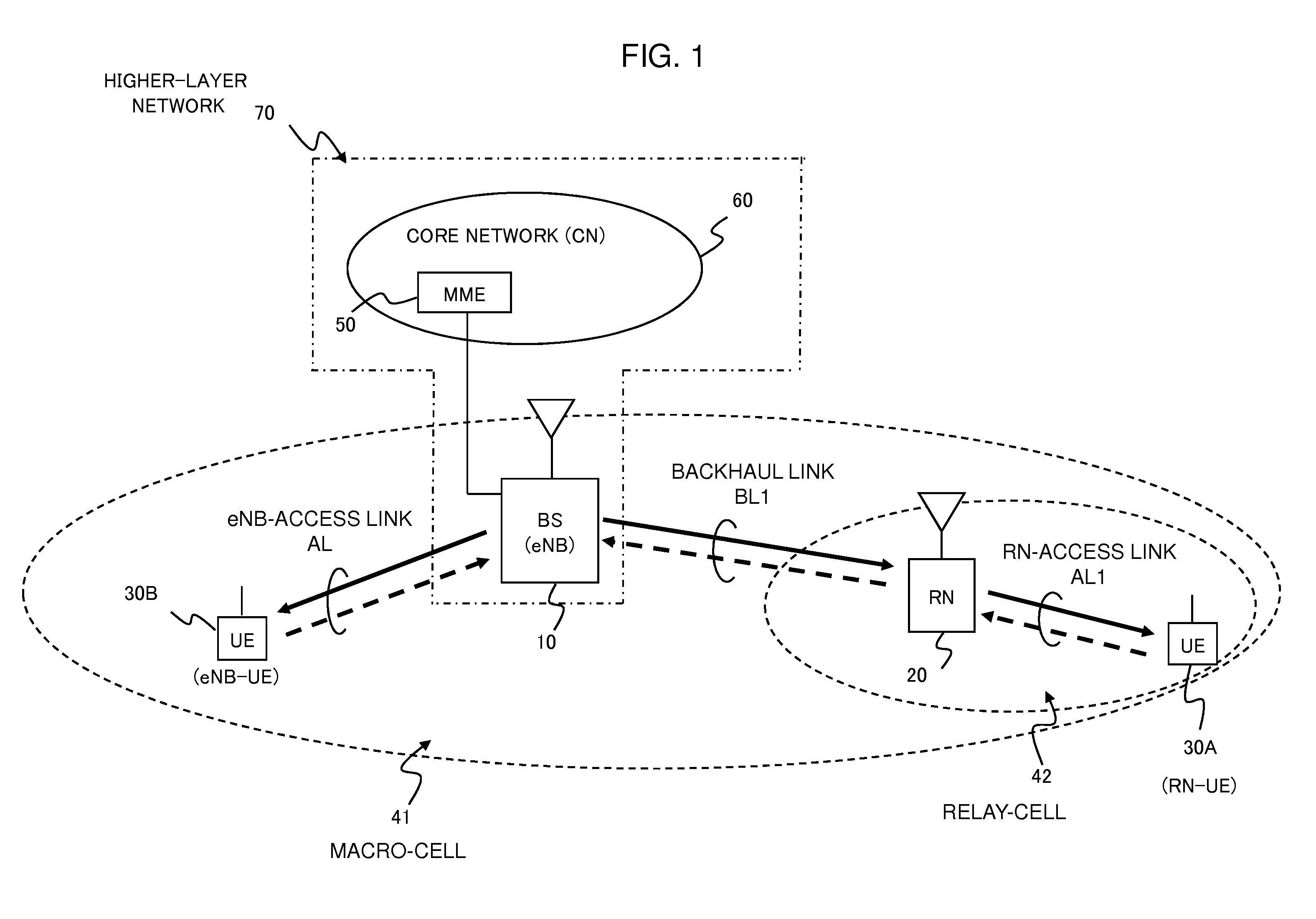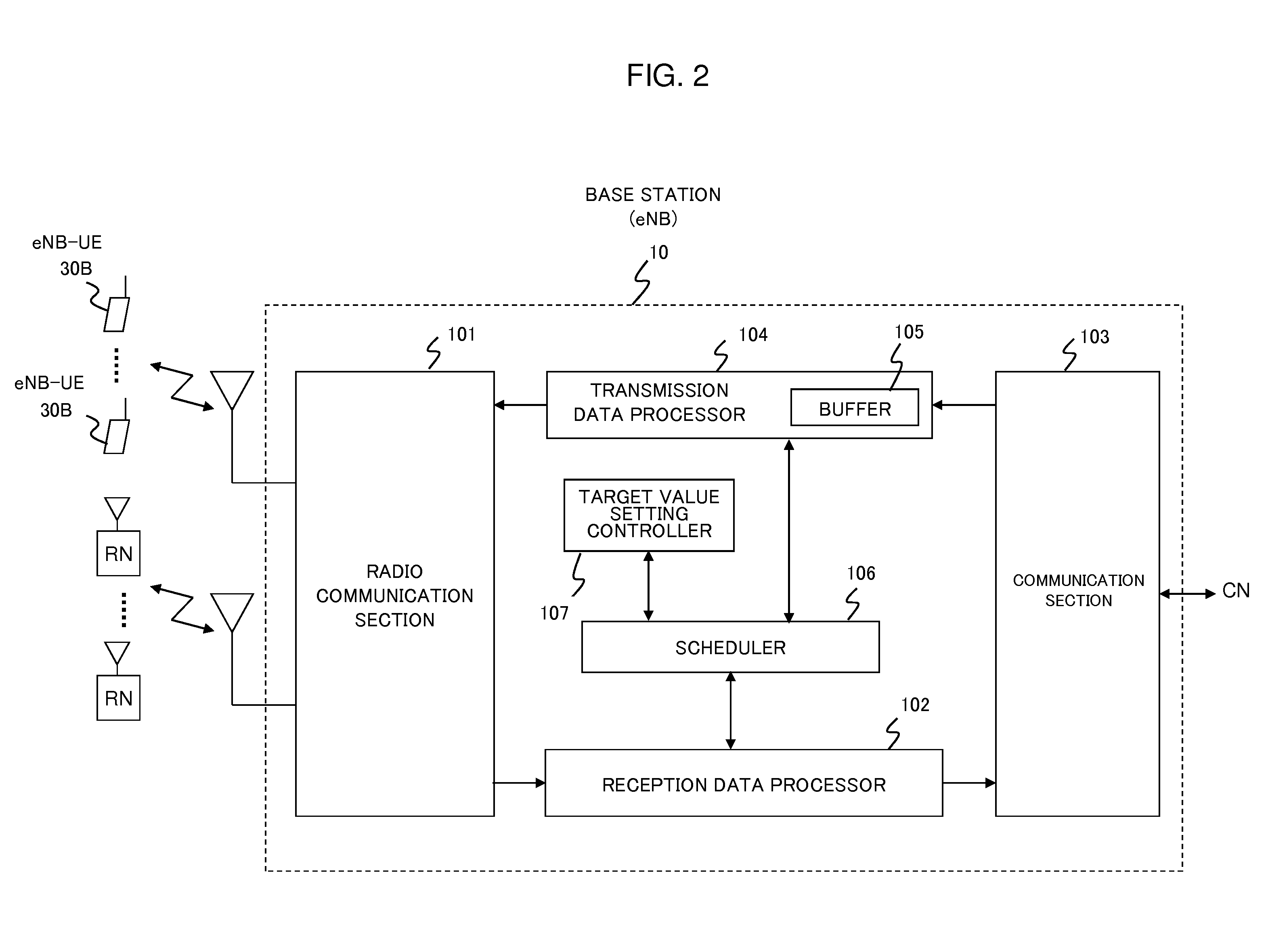Radio communication system and control method of radio resource allocation
a radio communication system and radio resource technology, applied in the field of radio communication system, can solve problems such as low signal quality, and achieve the effect of efficient radio resource allocation
- Summary
- Abstract
- Description
- Claims
- Application Information
AI Technical Summary
Benefits of technology
Problems solved by technology
Method used
Image
Examples
first exemplary embodiment
3. First Exemplary Embodiment
3.1) Outline
[0069]Referring to FIG. 6, the higher-layer network 70 including the DeNB 10 configures the RN 20 to set a target value for a predetermined parameter reflecting both statuses of the backhaul link BL1 and the RN-access link AD (SETTING). The predetermined parameter may be the amount of data stored in the RN 20 to be transmitted to the RN-UE 30A, a throughput ratio between the backhaul link BL1 and the RN-access link AL1, a throughput difference between the backhaul link BL1 and the RN-access link AL1, or another parameter related to both the backhaul link BL1 and the RN-access link AL1. The target value is pre-decided as a threshold for desired performance corresponding to QoS (Quality of Service) of UE or a requirement of system operator.
[0070]The scheduler 206 of the RN 20 as shown in FIG. 3 monitors the predetermined parameter to obtain a monitored parameter value at preset timing or predetermined intervals. The scheduler 206 compares the s...
second exemplary embodiment
4. Second Exemplary Embodiment
[0086]While the first exemplary embodiment shows the case of the DeNB 10 using the pre-decided target value for configuring the RN 20, a second exemplary embodiment shows a case of the DeNB 10 determining the target value based on link information related to the backhaul and RN-access links (backhaul link information and RN-access link information, respectively, in the following). In the following, detailed operations of an example of Embodiment 2 will be explained by employing FIG. 10 and FIG. 11.
[0087]FIG. 10 shows an exemplary sequence diagram of the DeNB 10 determining and transmitting the target value to the RN 20 based on the change in the number of RN-UEs, and changing the backhaul link parameter based on the difference information provided by the RN 20. Here, it is assumed that there are two RN-UEs (RN-UE1 and RN-UE2) in the network initially not connecting with the RN 20.
[0088]Referring to FIG. 10, step S1401 shows RN-UE1 establishing connectio...
third exemplary embodiment
5. Third Exemplary Embodiment
[0097]While the first exemplary embodiment shows the case of the DeNB 10 using the pre-decided target value for configuring the RN 20, a third exemplary embodiment shows a case of the DeNB 10 modifying the target value based on link information related to throughput of the RN-access link provided by the RN 20 (RN-access link throughput information in the following). In the following, detailed operations of an example of the third exemplary embodiment will be explained by referring to FIGS. 12-14.
[0098]FIG. 12 shows an exemplary sequence diagram of the DeNB modifying the pre-decided target value based on the RN-access link throughput information provided by the RN 20, and changing the backhaul link parameter based on the difference information provided by the RN 20.
[0099]Referring to FIG. 12, step S1601 to S1608 are the same as step S1101 to S1108 of FIG. 7 as described above, which show the DeNB 10 configuring the RN 20 with the pre-decided target value,...
PUM
 Login to View More
Login to View More Abstract
Description
Claims
Application Information
 Login to View More
Login to View More - R&D
- Intellectual Property
- Life Sciences
- Materials
- Tech Scout
- Unparalleled Data Quality
- Higher Quality Content
- 60% Fewer Hallucinations
Browse by: Latest US Patents, China's latest patents, Technical Efficacy Thesaurus, Application Domain, Technology Topic, Popular Technical Reports.
© 2025 PatSnap. All rights reserved.Legal|Privacy policy|Modern Slavery Act Transparency Statement|Sitemap|About US| Contact US: help@patsnap.com



